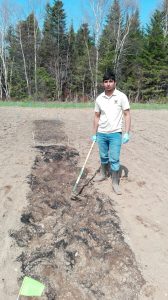Spring is surely coming and no doubt you are already looking at seed catalogues and planning your gardening activities for the coming growing season. If you don’t mind me asking… What are your favourite seeds? Hit reply and tell me what you plan to grow this year. I am interested and as a thank you for reaching out to me I will send you a coupon for 50% off on your next BioChar order. Now on to our topic about soil carbon…
As I mentioned in our first newsletter, biochar plays an important role for soils that have lost organic carbon. Biochar also helps to maintain the organic carbon at a healthy level between additions of compost. In this newsletter I am sharing three informative links that I think will greatly add to your understanding of soil carbon: a BBC podcast, a vimeo video, and a PDF that provides further information about the benefits of biochar composting and related research references – currently a hot topic in the biochar field. Continue reading to view these items…


